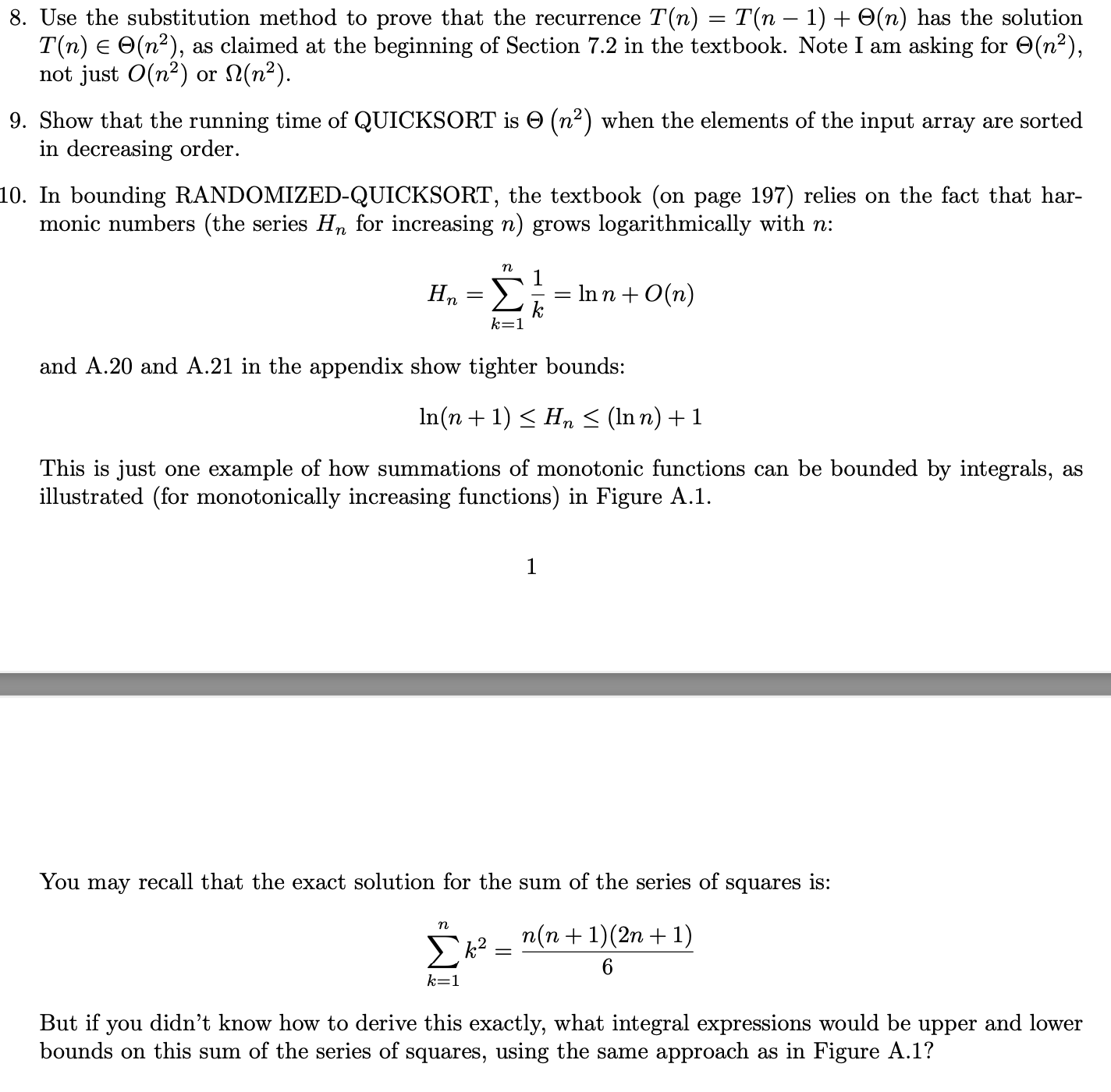Answered step by step
Verified Expert Solution
Question
1 Approved Answer
8. Use the substitution method to prove that the recurrence T(n) = T(n 1) + O(n) has the solution T(n) = O(n), as claimed

8. Use the substitution method to prove that the recurrence T(n) = T(n 1) + O(n) has the solution T(n) = O(n), as claimed at the beginning of Section 7.2 in the textbook. Note I am asking for (n), not just O(n) or N(n). 9. Show that the running time of QUICKSORT is (n) when the elements of the input array are sorted in decreasing order. 10. In bounding RANDOMIZED-QUICKSORT, the textbook (on page 197) relies on the fact that har- monic numbers (the series H for increasing n) grows logarithmically with n: = n 1 [ k k=1 and A.20 and A.21 in the appendix show tighter bounds: In(n + 1) Hn (ln n) + 1 This is just one example of how summations of monotonic functions can be bounded by integrals, as illustrated (for monotonically increasing functions) in Figure A.1. Inn + O(n) n k k=1 1 You may recall that the exact solution for the sum of the series of squares is: n(n+1)(2n +1) 6 = But if you didn't know how to derive this exactly, what integral expressions would be upper and lower bounds on this sum of the series of squares, using the same approach as in Figure A.1?
Step by Step Solution
★★★★★
3.44 Rating (151 Votes )
There are 3 Steps involved in it
Step: 1

Get Instant Access to Expert-Tailored Solutions
See step-by-step solutions with expert insights and AI powered tools for academic success
Step: 2

Step: 3

Ace Your Homework with AI
Get the answers you need in no time with our AI-driven, step-by-step assistance
Get Started


